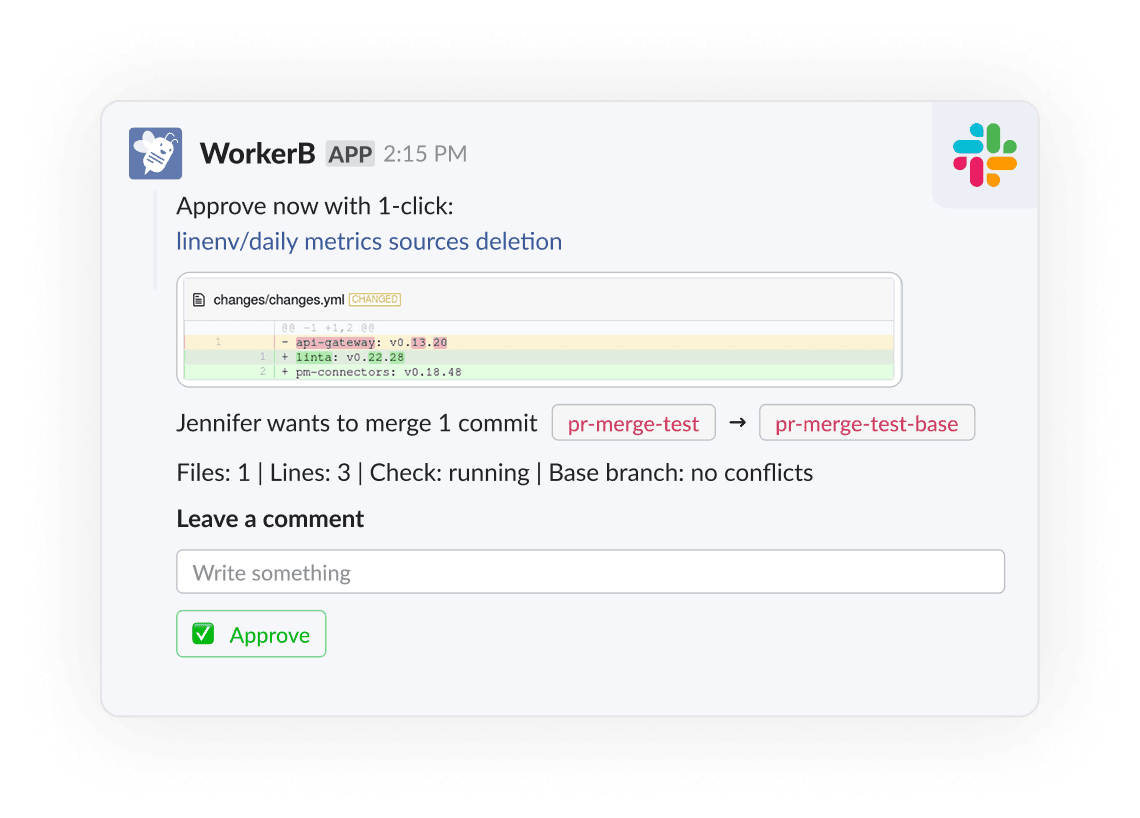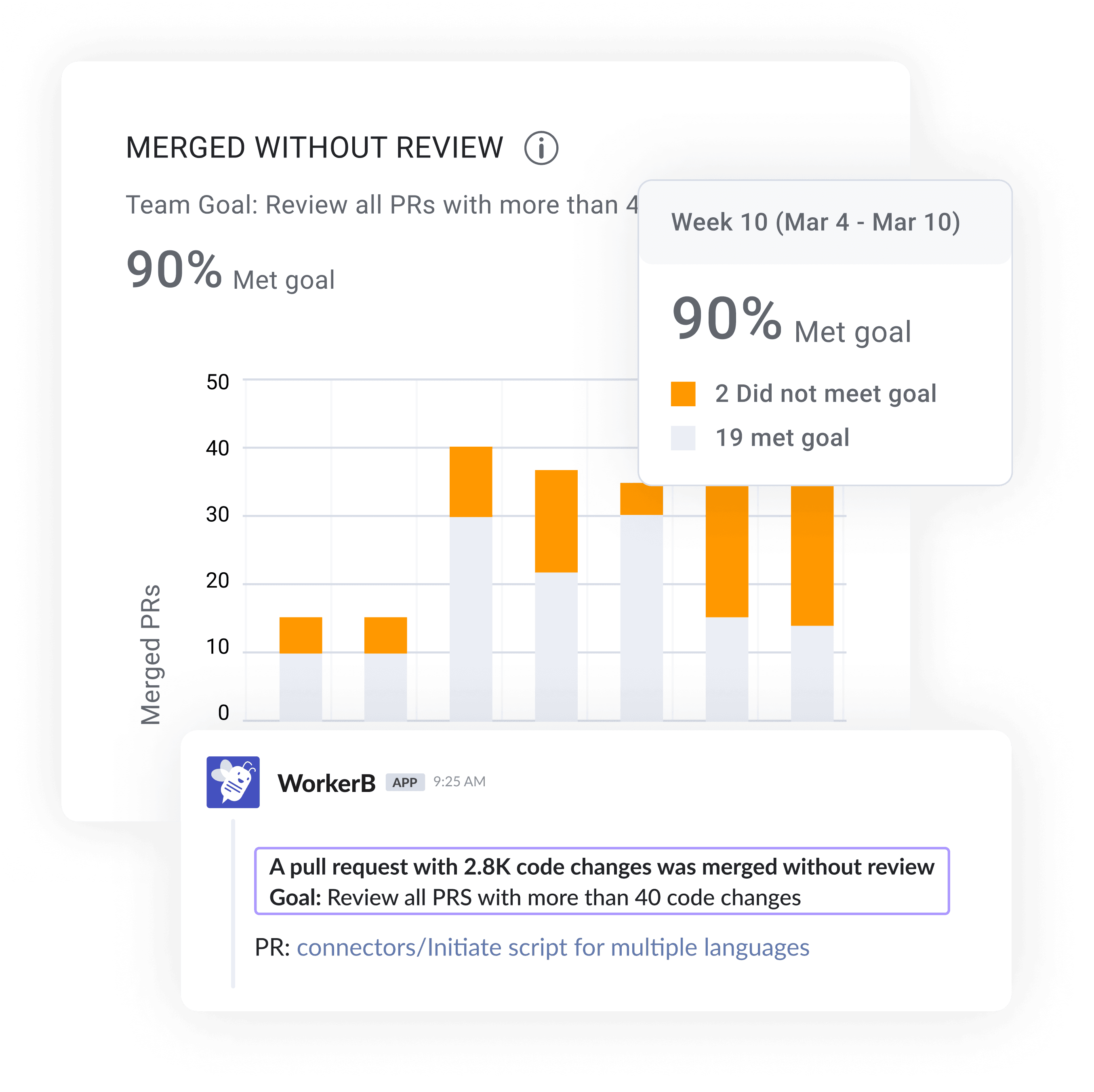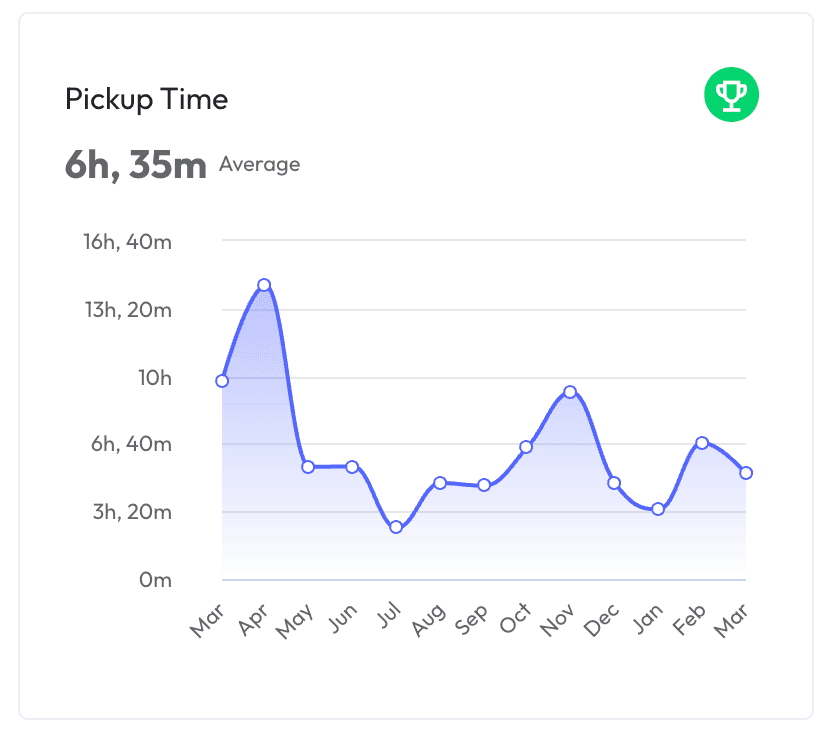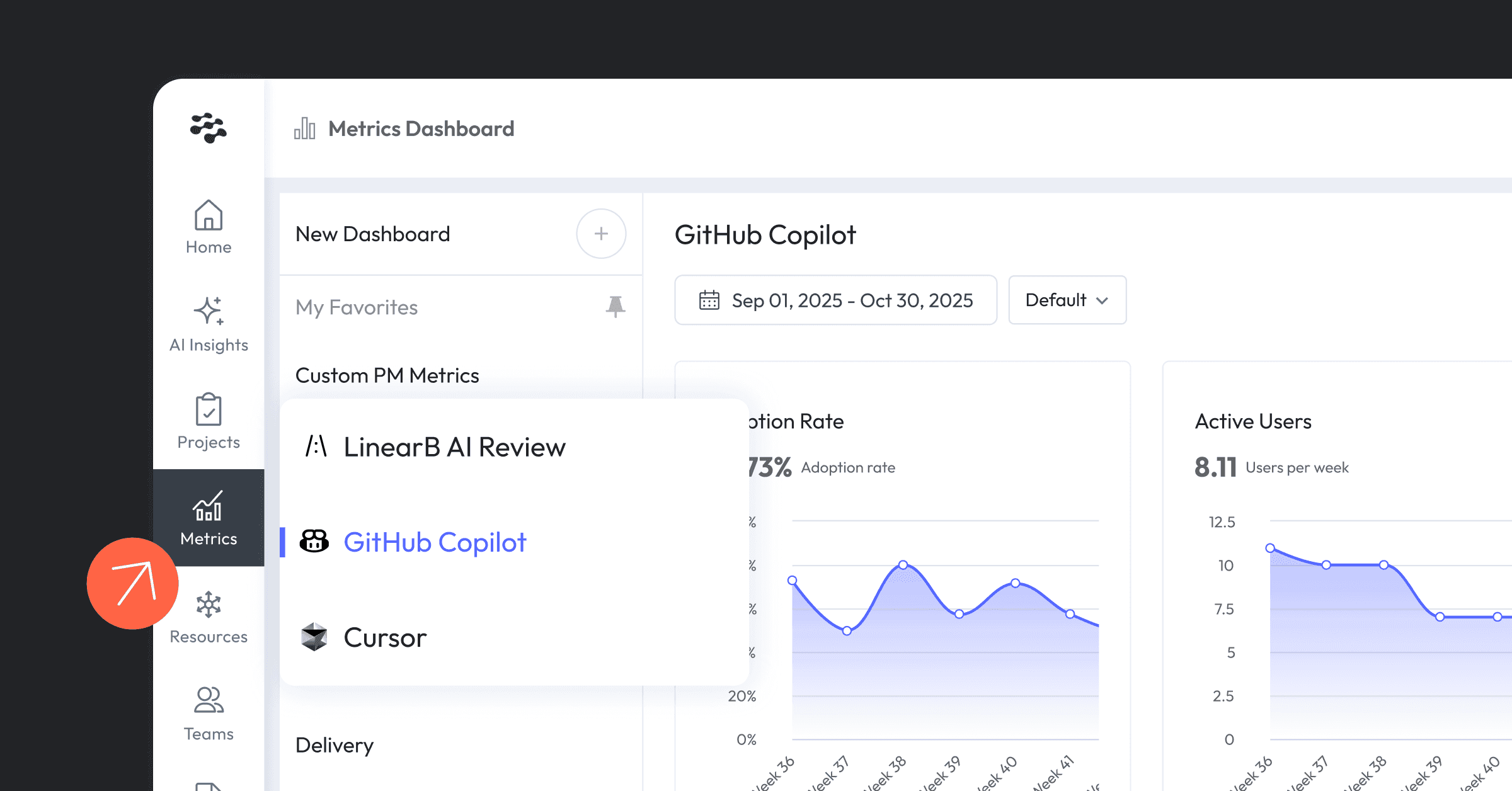Identify Why PRs Stall
PR reviews are often delayed not because developers lack intent, but because they lack timely, contextual reminders. Without clear visibility, PRs sit unreviewed, context-switching slows down decision-making, and teams struggle to gauge whether they’re meeting review expectations. Common challenges include:
- Poor PR review awareness. Assigned reviewers often don’t realize a PR is waiting for them, leading to unnecessary delays.
- Reviewers don’t know how much effort a PR will take. Without upfront context, reviewers must switch tasks just to assess effort, increasing disruptions and review cycle idle time.
- Low-risk PRs slow down high-risk work. Developers lack simple ways to fast-track low-risk PRs, creating bottlenecks where they shouldn’t exist.
- Teams lack visibility into code review health. Without clear goal tracking, teams can’t measure whether they are meeting expectations for review speed, depth, and engagement.
Deploy PR Notifications
By surfacing PR notifications at the right moment, teams remove friction from the review process. This speeds up response times by reducing context-switching, keeping code review goals on track.
Improve PR awareness and reduce idle time
- LinearB Slack Alerts: Provides smart, real-time notifications for PR assignments, nudging reviewers to take action without needing to check manually. Learn more.

PR reviews slow down when reviewers don’t realize they’re needed. Alerts in Slack and Microsoft Teams surface PR assignments when they happen, ensuring faster pickup times. Instead of waiting for a developer to check GitHub manually, deliver PRs to the right people where they’re already working.
Enable reviewers to prioritize work more efficiently
And these are more than just notifications, they surface key details related to your team’s goals and how PRs are impacting them in real time. This allows your team to proactively improve their code health and delivery velocity. These alerts can be tailored and enriched for your team:
- Daily Digest Notifications: Summarizes outstanding PRs and relevant team activity in a structured Slack update, ensuring developers stay informed without checking multiple sources. Learn more.
- One-Click Approvals for Low-Risk PRs: Did you know up to 30% of PRs can be auto-approved or merged? Set thresholds for quick approvals, so minor PRs don’t block larger initiatives.
Not all PRs require the same level of scrutiny. Each organization defines “low-risk” differently, based on their internal standards. Whether it’s PR size, file type, or lack of production impact, teams can establish clear thresholds to streamline approvals. Automating these decisions with PR Policy Setting reduces unnecessary review cycles, freeing up engineers to focus on high-impact work.
Set PR review goals and mitigate risk
- Team Goals & Notifications: Set team PR review benchmarks and receive alerts about progress. Learn more.
- Automatic Goal Notifications: Receive alerts when PR review times, depth, or other team-defined metrics need attention. Learn more.

Visibility isn’t just about individual PRs. But in this case, you do have to label the trees to understand the forest you’re in.
As your engineering org hums along, it’s vital to understand if your team is keeping up with PR review best practices. By setting review cycle goals and receiving automatic alerts when trends deviate, teams can proactively adjust workloads and prevent bottlenecks before they impact delivery and add risk.
Track Notification Impact with Key Metrics
The LinearB platform connects code review practices to developer productivity outcomes. By tying the impact of PR notifications to these key engineering metrics, you can demonstrate ROI for your improvements.
Reduce pickup time
PR notifications are essential for reducing pickup time by ensuring reviewers know immediately when their input is needed. Without timely prompts, PRs easily get overlooked in busy workflows.

Smart Slack or Microsoft Teams alerts surface PR assignments where developers already work, eliminating the need to check GitHub manually. Alerts provide key details (like PR size, risk level, and how long it’s been waiting) so reviewers can prioritize without unnecessary context-switching.
Some notifications even allow one-click actions (e.g., approving a one-line change) directly in the chat. Teams that adopt automated PR notifications consistently reduce idle time between assignment and action, accelerating their review pipeline.
Improve review depth
Notifications also improve review depth by giving reviewers key information without slowing them down. Alerts can highlight PR complexity, production impact, or risk level, signaling where deeper scrutiny is needed.
Lower-risk PRs can be fast-tracked, while critical changes get thorough reviews. By integrating contextual details directly into notifications, reviewers can make informed decisions about where to focus their efforts. Notifications can include reminders about team standards, goals for review depth, or prompt reviewers to leave a comment when warranted.
Quality remains top-of-mind for reviewers and they provide more meaningful feedback, rather than rubber-stamping approvals. This balances speed and depth, leading to better code quality, stronger collaboration, and long-term maintainability.
Reduce review time
PR notifications don’t just speed up pickup, they also reduce overall review time. Once picked up, reviews can still stall if context is missing or priorities are unclear.
Smart alerts provide critical info upfront (like review goals or risk level) helping reviewers stay focused. Automated reminders prevent PRs from sitting idle with contextualized notifications. For example, if a PR has been sitting in review for longer than your team’s goal, automated alerts can prompt the reviewer to take action or escalate when necessary. These timely nudges prevent PRs from languishing in queues and ensure that reviews are completed in a reasonable timeframe. The result is fewer delays, faster merge times, and steady delivery, without sacrificing quality.
PR notifications bridge the gap between intent and action, ensuring that reviewers engage with PRs at the right time and teams maintain momentum in their development process. With smart notifications, teams move faster (review time), reduce unnecessary delays (pick up time), and maintain high-quality reviews (review depth) without adding more manual oversight.




